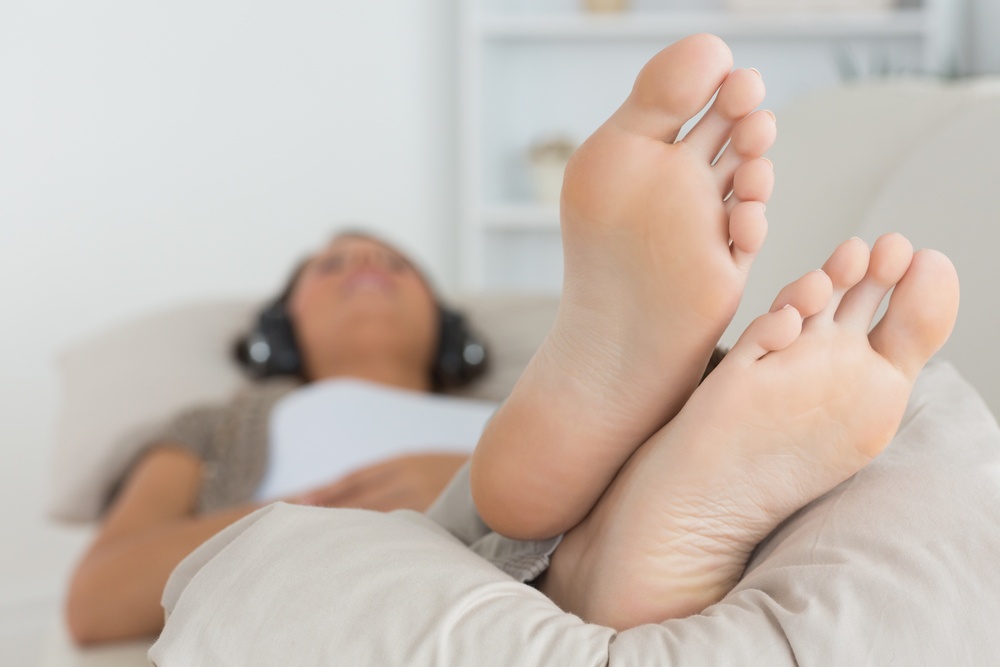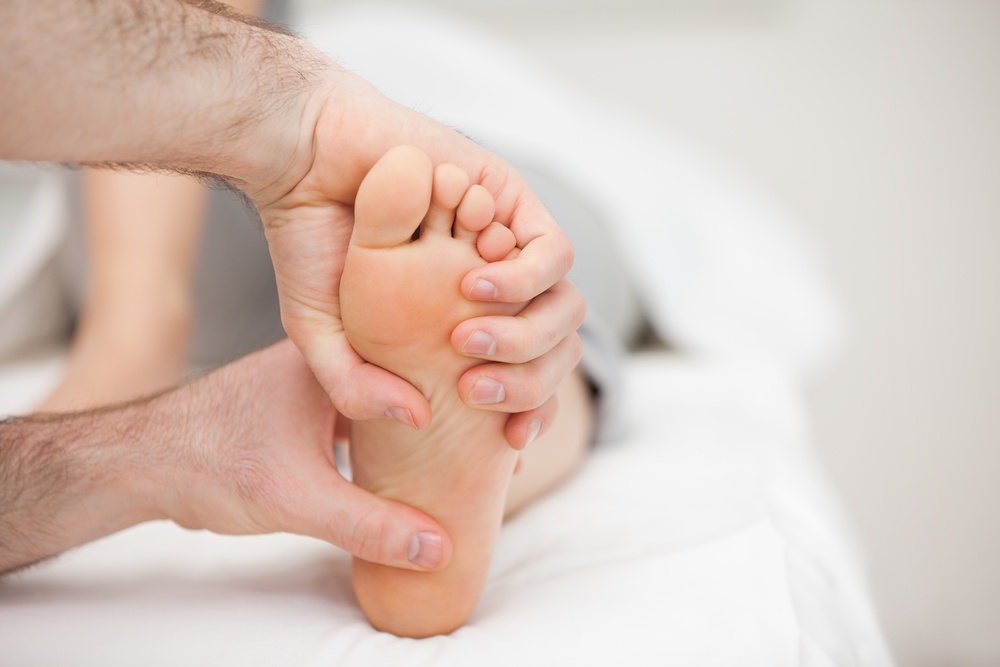Do you suffer from foot pain in the form of a bony bump?
A bunion is a painful, bony bump that forms on the inside of the foot at the big toe joint.
The big toe has these bones:
- Phalanx bones
- Metatarsal
- The metatarsophalangeal joint (MTP) is where the phalanx bones and metatarsal meet. Bunions form at the MTP joint.
When the metatarsal bone shifts toward the inside of the foot and the phalanx bones angle toward the second toe, this causes the MTP to grow, which then gets pushed out of alignment, leaving you with a protrusion from the inside of the forefoot; a bunion.
Keep reading to learn about the problems bunions can cause, diagnosis, treatment and prevention.
BUNION PROGRESSION
Bunions start out small. They get bigger over time. Walking will become more painful because the MTP joint flexes with every step, causing the bunion to grow. In severe bunions, the big toe may get pushed so far it will lay completely over or under the second toe, sometimes even touching the third toe. Calluses may develop where the toes rub against each other, which will cause extra pain and discomfort.
Foot Problems Related to Bunions:
- Bursitis: A bunion may lead to bursitis, a painful condition where the fluid-filled sac that cushions the phalanx bones and metatarsal bone near the MTP joint becomes inflamed.
- Arthritis: If the joint cartilage that covers the MTP joint becomes damaged from not gliding smoothly, this may lead to chronic pain and arthritis.
- Bunionette: A bunionette, or “tailor’s bunion,” is where a bump forms on the outside of the foot near the base of the little toe, which can also cause bursitis and/or a hard callus over the bump.
BUNION CAUSES
Anyone can get a bunion, but they are more common in women. Bunions form from:
- Wearing ill-fitted shoes: Shoes with a narrow, pointed toe that forces the toes into an irregular position can cause bunions.
- Heredity: Due to a person’s shape and structure, some people inherit feet that are more likely to develop bunions.
- Diseases: Rheumatoid arthritis or other inflammatory conditions can cause bunions as well as a neuromuscular condition like polio.
BUNION SYMPTOMS
Other symptoms of a bunion can include:
- Pain and tenderness
- Redness and inflammation
- Hardened skin on the bottom of the foot
- A callus or corn on the bump
- Stiffness and restricted motion in the big toe
- Difficulty walking
BUNION DIAGNOSIS: PHYSICAL EXAMINATION | X-RAY
A physical examination will be enough for your doctor to tell if you have a bunion, but your doctor will also order an x-ray to see how far out of alignment your bones have become in addition to any damage to the MTP joint.
Your doctor will take the x-ray while you are standing so he or she can more clearly see the malalignment of the bones of your foot. The alignment of your foot bones change when you stand or sit.
These x-rays will determine how best to correct the bunion.
BUNION TREATMENT: NON-SURGICAL
You will generally not need surgery for bunions. Making changes in your day-to-day life can reduce pain and keep the bunion from worsening.
- Changes in footwear: Wear shoes that fit properly, do not compress the toes and in some cases, wider shoes with ample toe room.
- Padding: “Bunion shield” pads can help cushion the bunion. You can buy pads at a drugstore or pharmacy.
- Icing: Apply ice several times a day for 20 minutes at a time. This will reduce swelling. Do not apply ice directly on your skin; use a washcloth or towel.
- Medications: Nonsteroidal anti-inflammatory medications, such as ibuprofen and naproxen, can help stop pain and swelling.
After you have made changes in footwear, and you are still having difficulty walking, your doctor may suggest surgery to remove your bunion or bunionette. Bunion surgery realigns bone, ligaments, tendons and nerves so that the big toe moves back to its normal position.

TIPS FOR PROPER SHOE FIT
It is safe to buy shoes with wider insteps, broad toes and soft soles. Stay away from shoes that are too short, tight or have pointed toes. Also, avoid heels higher than a couple of inches. Higher heels put more pressure on the forefoot and increase the risk of foot problems and injury.
- Don’t go off the shoe size on the box. Sizes can vary among shoe brands and styles. Judge the shoe by how well it fits on your foot.
- Buy a shoe that conforms to the shape of your foot.
- Have your feet measured regularly. The size of your feet changes as you grow older and especially after pregnancy.
- Have both feet measured. Most people have one foot that is larger than the other. Always fit to the largest of the two.
- Your feet will be the largest at the end of the day, so you should measure then.
- Stand during the fitting process, and check that there is more than enough space (3/8″ to 1/2″) for your longest toe at the end of the shoe.
- Make sure the ball of your foot fits well into the widest part of the shoe.
- Don’t buy shoes that feel too tight, expecting them to “stretch.”
- Your heel should fit comfortably in the shoe with not a lot of slippage.
- Walk in the shoe to make sure it fits and feels right before buying.
Mountainstate Orthopedic Associates
If you are suffering from foot pain, Mountainstate Orthopedic Associates can help.
The most common issues we see relate to tendinitis, breaks and fractures, sprains, arthritis, plantar fasciitis and foot deformities like bunions.
If you would like to learn more about foot conditions and procedures we perform, please download our Guide to Foot Pain below:
If you’re ready to make an appointment with one of our orthopedic surgeons, call us today at 304-599-0720.

